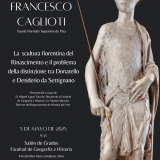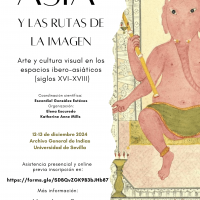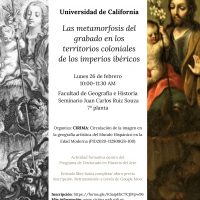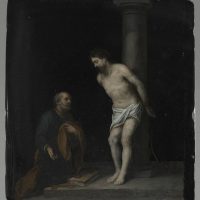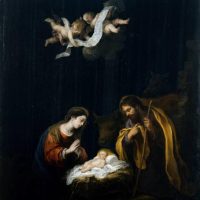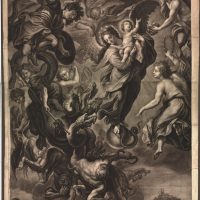más actividades
- destacado, seminario
- Seminario de investigación «Gherardo Starnina y España»
Roberto Alonso Moral, integrante de CIRIMA, es organizador del seminario titulado «Gherardo Starnina y España», a cargo del profesor Emanuele Zappasodi (UNISTRASI), quien prepara una monografía sobre este pintor, en la que replanteará su estilo y cronología a partir del estudio de su obra en España.
Los territorios asiáticos del mundo ibérico durante la Edad Moderna han sido desatendidos por la historiografía del arte, que sí ha dedicado mayor atención a las circulaciones visuales en el Atlántico. CIRIMA ha explorado con anterioridad la influencia de Italia en el mundo ibérico y las circulaciones interamericanas, así como entre América y Europa. Por ello, este último encuentro viene a culminar el proyecto abordando el tercer vértice: Asia, con el empeño de impulsar nuevas visiones que se alejen de perspectivas eurocéntricas. Con esta voluntad de abrir la mirada, los ponentes reflexionarán sobre la imagen y sus circulaciones desde/en la India y Filipinas, no sólo con respecto a Europa, también a las Américas; sin ignorar las circulaciones de carácter intra-asiático (Goa-Manila-Macao, la costa de la China oriental y Japón). Lo harán abordando provechosos y desafiantes estudios de caso que se insertan en 4 paneles: 1. Formas e ideas en movimiento: cultura material y procesos; 2. Políticas de la imagen; 3. Comercio y consumo artístico; 4. Artistas y agentes.
Así, las ponencias se dedicarán a analizar las circulaciones del arte y la imagen y toda la gama de procesos, estrategias y actores que intervienen a lo largo de estos espacios y rutas de intercambio trazadas a lo largo del mundo ibérico. El estudio de las circulaciones de conocimiento artístico y arquitectónico, así como de objetos y cultura visual y material nos permitirá problematizar la terminología y aproximaciones con que la historiografía del arte ha manejado el fenómeno. En este sentido, la Mesa redonda Circulación: límites y desafíos del enfoque metodológico, busca ofrecer nuevas vías para la comprensión de los ejes teóricos que fundamentan no sólo este congreso, sino la serie de encuentros que el proyecto CIRIMA ha organizado en los últimos años.
El proyecto CIRIMA organiza el seminario con el profesor Almerindo Ojeda (Universidad de California), que se llevará a cabo el próximo lunes 26 de febrero a las 10:00 en el seminario Juan Carlos Ruiz Souza, ubicado en la séptima planta de la Facultad de Geografía e Historia de la UCM. Esta actividad formativa se enmarca dentro del Programa de Doctorado en Historia del Arte de la Universidad Complutense de Madrid.
- eventos externos, exposición
- Exposición «Identidades Partilhadas. Pintura Española en Portugal»
El próximo 30 de noviembre, en Lisboa, se inaugurará la exposición «Identidades Partilhadas. Pintura Española en Portugal», en la que participa como comisario Benito Navarrete, IP de nuestro proyecto, en conjunto con Joaquim Caetano, director del Museo Nacional de Arte Antiga.


